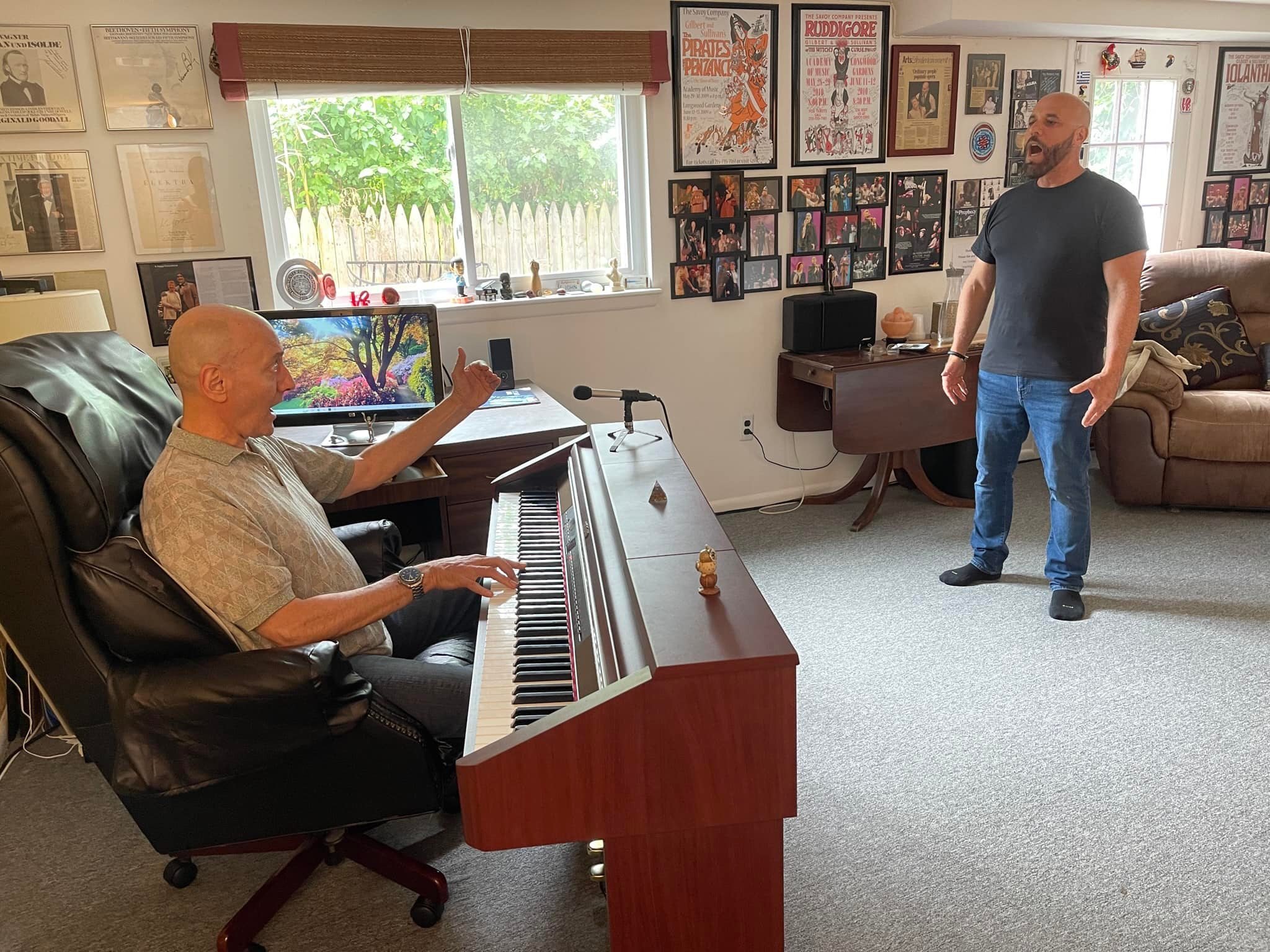
With 40 years of teaching experience in three different countries, I’ve learned a thing or two about singing.
Welcome to My Knowledge Center
This page will cover many of the questions potential students have and give some insight to me and my teaching methods. Click the links below to learn more.
The Voice Building Method Explained (below)
Free Online Singing Tips
Principles of Voice Teaching
Common Myths and Misconceptions about Voice Teaching
Technical Attributes of Great Singers
How to Not Wreck Your Voice as a Pop or Rock Singer
Intensity Vs. Volume: A Common Misconception about Pop/Rock Singing
Cognitive Dissonance and The Psychology of Teacher Worship
Singing and Weight Loss for Opera Singers
The Voice Building Method
A History:
After 14 years of ‘singing lessons’ in three different countries, a Master’s Degree in Opera Singing, a BA in Voice Performance and an Associate Degree in Voice Teaching, it became clear to me that there was a severe flaw in the approach taken towards voice teaching or ‘singing lessons’. There is a vast difference between the way voices are taught and all other musical instruments. Notice I said “voices” and “instruments”? Why isn’t the voice considered an instrument? Because you can’t see the voice nor hold it in your hand, singers are generally given a different training approach than other musicians. For example, the first thing an aspiring violinist needs to do is go into a music store and purchase a violin. If they were a little short on money and the salesperson showed them a violin that wasn’t completely built would they still buy it? No, they would find an alternate means to obtain a finished instrument because you can’t learn to play the violin or any other instrument if it hasn’t been built.
But you can’t go into a music store and purchase a voice. A singer can’t ‘buy’ their instrument and then learn to start playing it like any other musician can. This is why singers are at a great disadvantage compared to other musicians - singers are the only musicians who use their own body as their instrument. Therefore, whether you want to sing opera or pop or be a professional voice user of any kind, unless you have the rare fortune to be blessed with a natural singing voice, in other words, a voice that has been built by nature to work correctly for the most part and only needs polishing, also known as a singing prodigy, (which is the case with most successful singers) the voice needs to be built before you can learn to play it.
Unfortunately, the vast majority of voice teachers work the already existing voice even if the student can’t sing at all. They try to start with a finished product: Have the student ‘sing’ scales and songs before the voice has been built and after a year of weekly ‘lessons’, the student sounds more or less the same. The only reason they think they have improved is because they want to believe they have and they’ve gained confidence regarding their vocalization, consequently they confuse that confidence with improvement. I once gave an evaluation to a soprano who had been studying with the same prominent teacher for 25 years and she hadn’t even been taught the fundamentals of vocal technique.
Not being blessed with a great ‘natural’ voice, as I said above, I took ‘singing lessons’ for 14 years in three different countries with very reputable ‘teachers’ who worked the already existing voice but by the end of that I was still at square one and completely clueless about vocal technique. Then in 1988 I found a unique teacher who practiced voice building and as a result I felt that I was taking singing lessons for the first time. After five years with him I went about taking lessons with a few other teachers to fill in the gaps in his teaching method and finally realized that I needed to put all the pieces of the puzzle together and develop my own method of training the voice as much for my own benefit as for that of my students.
As a result, after 40 years of research and practical application to myself and my students, I developed The Voice Building Method which is essentially personal training for the voice as it is largely based on the muscle and strength building techniques of weight training and body building. By using carefully applied exercises designed to effectively condition the specific muscles which control the various components of the singing or speaking voice alternating with periods of vocal rest to allow those muscles to recuperate and strengthen (taking advantage of the process of tear down and repair) this method produces results very rapidly. Most students who previously studied with other teachers have reported experiencing a year’s worth of progress in the first month of lessons. As a result, I possess the unique ability to build a marketable singing or speaking voice completely ‘from scratch’ (provided the student has a reasonable level of inherent musical and vocal aptitude).
One of the most frustrating aspects of studying with all the ‘teachers’ I trained with during my first 14 years of vocal study was constantly hearing, “Do it like this” or “This is how it should sound”, (followed by a demonstration by the teacher who in many cases was a polished professional singer with a worldclass natural voice and decades of experience) without being given an exercise to make it sound like that. This was basically ‘teaching by wishful thinking’.
For example, even something as simple as opening my mouth was what my first ‘teacher’ in conservatory told me over and over again. “Throw the jaw down, John” was what I remember hearing repeatedly for the four years I studied with him but by the end of that time I still wasn’t doing it. So, years later in my research I developed an exercise by which students can strengthen the lateral pterygoid muscles which open the mouth so that after a couple of weeks the student will be opening their mouth without having to think about it. Which seems the more efficient method?
A singer has so much to focus on when performing that they shouldn’t have to concern themselves with whether they are opening their mouths enough or if the cords are vibrating correctly. This is one of a series of what I call ‘Dry Exercises’ ie: exercises which strengthen and improve the voice but do not involve using the vocal cords. These exercises are one of the hallmarks of The Voice Building Method.
In essence, The Voice Building Method turns what a student should do into what they will do as demonstrated by the beneficial results of the thousands of students I have trained over the past 40 years.
Common benefits of this method:
Within just a few weeks, students of all ages, levels and singing styles usually experience:
A substantial extension of both upper and lower range
Elimination of the ‘break’ in female pop singers
An increase in vocal stamina and elimination of vocal fatigue
The ability to sustain long notes and phrases without running out of breath
An understanding of how the voice actually works and a resulting improvement in the mind/body connection
More substance and tone quality in the overall sound
Experiencing the voice more easily produced throughout the range
And best of all, enjoying these benefits without having to think about them since in many cases the muscles which create these results have been strengthened independently of vocalizing. The exercises which achieve these results are designed to be done every other day and only take about 30-40 minutes to complete.
During this initial training period, the student must not sing any repertoire and focus solely on the vocal exercises. Once the instrument has been built, the student is ready to learn how to play it and can apply the vocal skills they have acquired in the exercises to repertoire.
The Voice Building Method is broken into 5 fundamental categories:
Strengthening the breath support system of muscles and bringing it under the student’s awareness and control.
Establishing effective and correct cord response (strengthening the vocal cords).
Adjusting resonance appropriately according to the style of singing.
Building a vibrato or improving on an already existing one.
Eradicating the interference of the conscious mind in the singing process using the formula: Performance = potential – interference.
